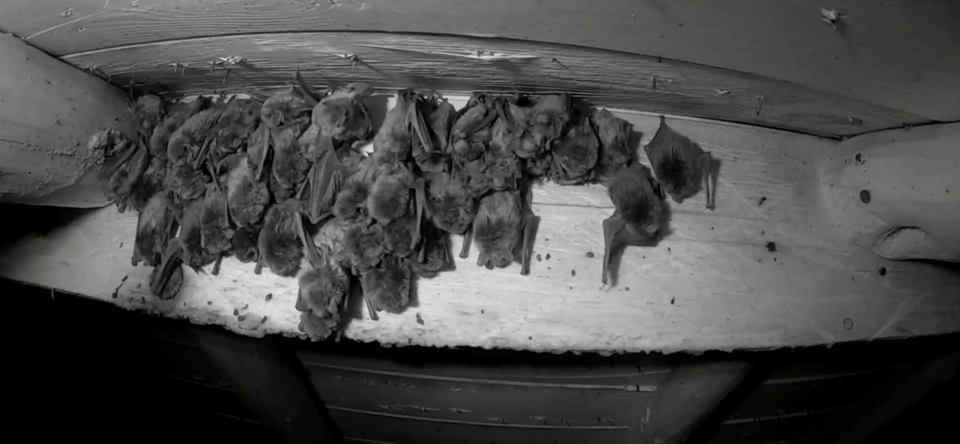Scott Hayes | [email protected]
Local Journalism Initiative Reporter
One year after Pseudogymnoascus destructans (Pd) – the fungus that causes white-nose syndrome (WNS) – was confirmed in the province, it has not progressed much farther beyond where it was initially detected.��
So far, positive Pd tests have only come back positive along the Red Deer River and Milk River in southern Alberta, as well as slightly to the west of the Red Deer River.
"This is the first year with a confirmed detection along the Milk River and Beaver River [in Saskatchewan]," said Cory Olson, program co-ordinator of the Alberta Community Bat Program with the Wildlife Conservation Society Canada (WCSC).
Researchers also confirmed that Pd was present on the skin membranes of Little Brown Myotis, otherwise known as the Little Brown Bat, along those two rivers.��
"Our results indicate that Pd is continuing to spread westward, but it has not yet been detected in Alberta’s Rocky Mountains," Olson said.����
Additional testing of samples, mainly on testing of guano collected at bridges, will occur later in the year.��
A WNS-positive bat has not yet been found within the province. Pd, which thrives in cold, dark places, causes lesions or fungal grown on the skin of the bat, typically on its nose or its face.��
It attacks the bare skin of bats while they are hibernating and relatively inactive. It causes them to behave erratically, making them more active than usual, which burns up fat that they would otherwise need stored in their bodies to survive the winters.��
WNS has killed millions of bats across North America, devastating some colonies with 90 to 100 per cent fatality rates.��
While there are eight species of bat within Jasper National Park, two of them are considered endangered species, including the Little Brown Bat. It is one of the most vulnerable of the approximately 1,400 known species of the mammal. There are only a few cave sites across western North America where bats can be monitored directly, one of which is in Alberta.
Parks Canada staff have identified an overwintering site called a hibernaculum within Jasper National Park. Recreational access to all caves is managed using a permit system to reduce the spread of WNS.����
That neither Pd nor WNS have been discovered within the Jasper's bats is of some relief to Brenda Shepherd, monitoring and species at risk biologist for Jasper National Park.��
"It's not good news that the fungus was detected, but it's good news that we're not finding dead bats," she said.��
She explained that since WNS was first identified in 2006 in New York, it has been found as far west as Washington State. It is around us, she said, suggesting that it is just a matter of time before bad news must be reported.��
"We expect it will come. We're not sure whether because we're further north it may not behave in the same way [or] have the same impacts as it has in other parts of the range. It remains to be seen," she said.��
"We are continuing to do the work that we can to help populations be as healthy as they can be."��
Members of the public can help by reporting any dead bats or bats that are exhibiting strange behaviour such as being active during the winter.��
Those reports can be made by calling Jasper Dispatch at 780-852-6155.��
Promoting bat-friendly management is one of the top things that the WCSC also does to help bats recover. The Alberta Community Bat Program has free resources and information on its website at .
Editor's note: The story was updated on Tuesday, Oct. 31.




